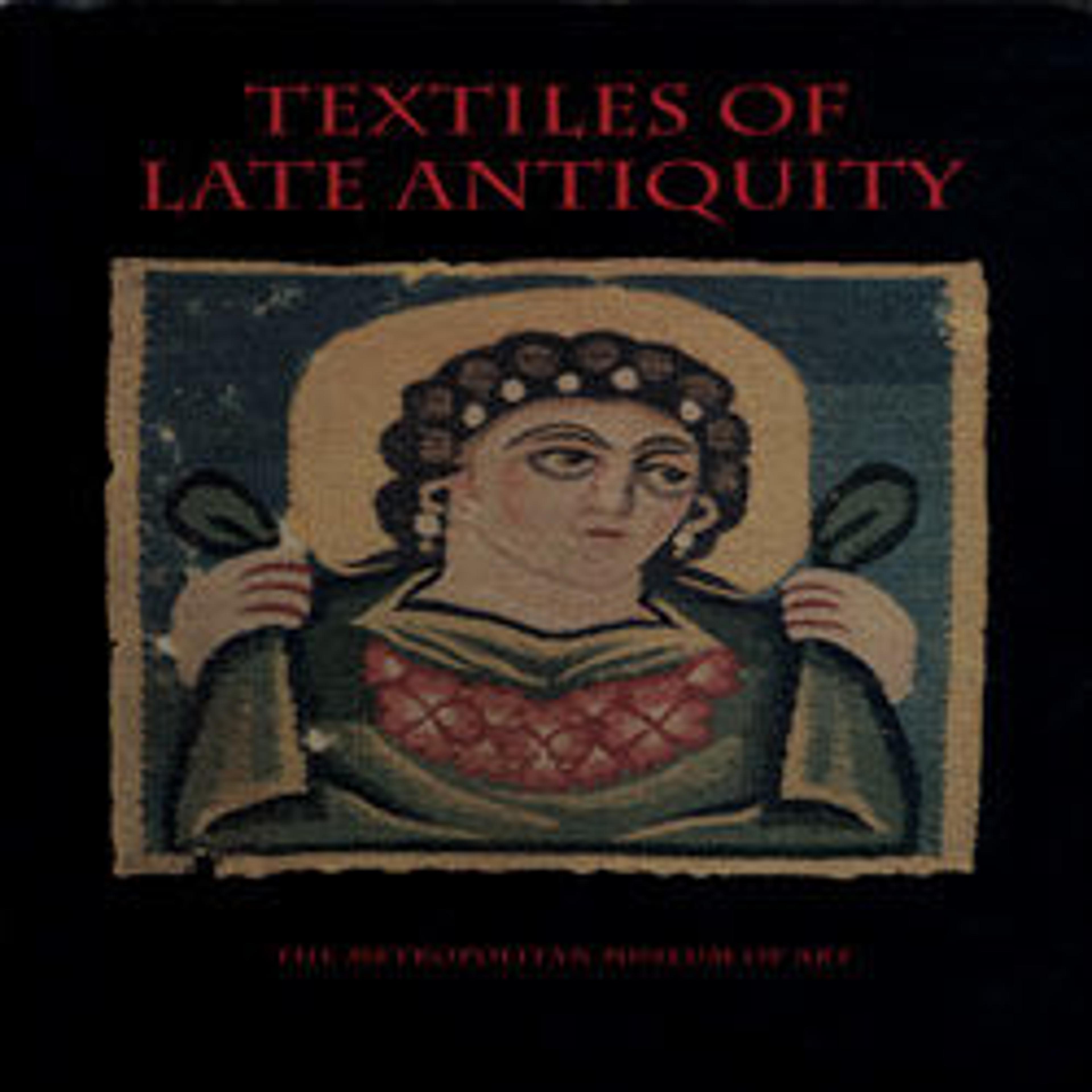Tunic Bands with Warriors
The majority of early silks found in Egypt were excavated from the cemeteries of the Upper Egyptian cities of Antinoopolis (Antinoë) and Panopolis (Akhmim). The two examples displayed here are typical of the silks found at Akhmim: in general, they are brown, green, or pale yellow in color with vegetal borders and repeating designs divided into slender compartments separated by bands. Many of the silks have names inscribed in Greek, Coptic, or Arabic script, suggesting that the silks were produced after the Arab conquest of Egypt.
The example seen here begins with a stylized palmette, above which a hunter holding a sword and shield pursues a lion and a rabbit. A candelabrum-like floral motif topped by birds completes the design. The bands are framed by a border of leaves and flowers, similar to that of the adjacent textile. The small roundel contains a crowned female head.
The example seen here begins with a stylized palmette, above which a hunter holding a sword and shield pursues a lion and a rabbit. A candelabrum-like floral motif topped by birds completes the design. The bands are framed by a border of leaves and flowers, similar to that of the adjacent textile. The small roundel contains a crowned female head.
Artwork Details
- Title: Tunic Bands with Warriors
- Date: 7th–9th century
- Geography: Attributed to probably Egypt or Syria
- Medium: Silk
- Classification: Textiles-Woven
- Credit Line: Fletcher Fund, 1946
- Object Number: 46.156.18b, c
- Curatorial Department: Islamic Art
More Artwork
Research Resources
The Met provides unparalleled resources for research and welcomes an international community of students and scholars. The Met's Open Access API is where creators and researchers can connect to the The Met collection. Open Access data and public domain images are available for unrestricted commercial and noncommercial use without permission or fee.
To request images under copyright and other restrictions, please use this Image Request form.
Feedback
We continue to research and examine historical and cultural context for objects in The Met collection. If you have comments or questions about this object record, please contact us using the form below. The Museum looks forward to receiving your comments.
